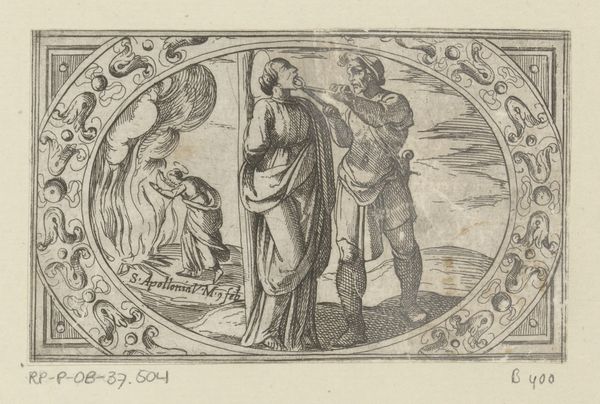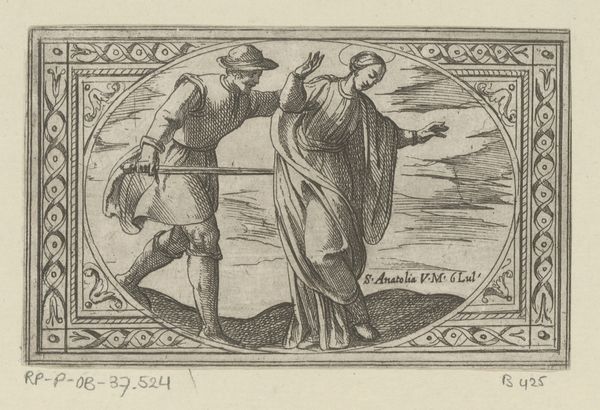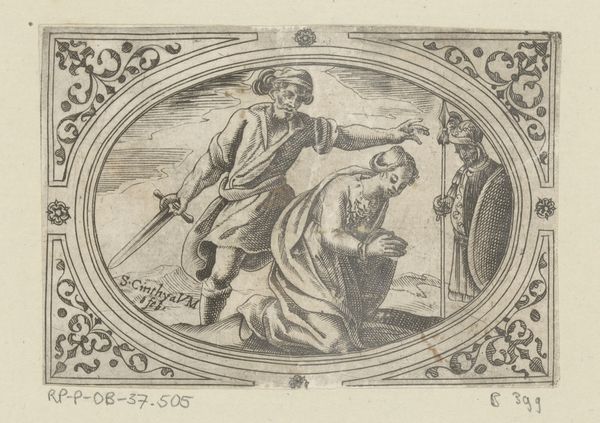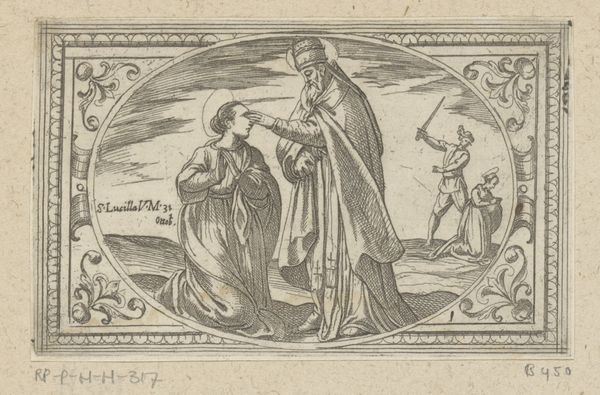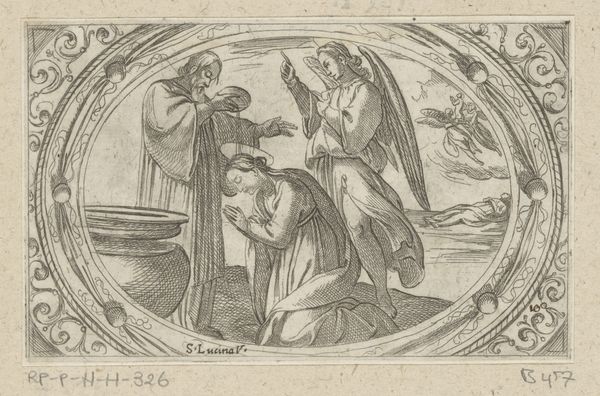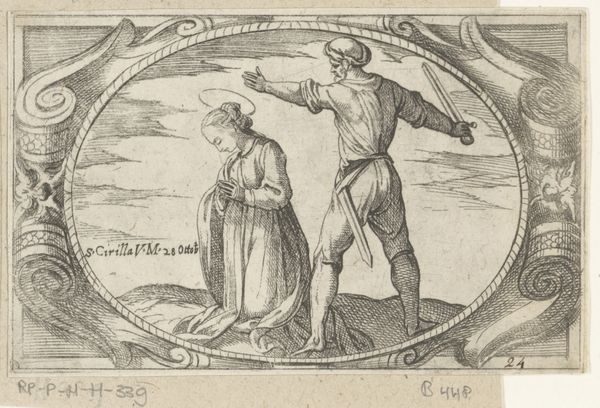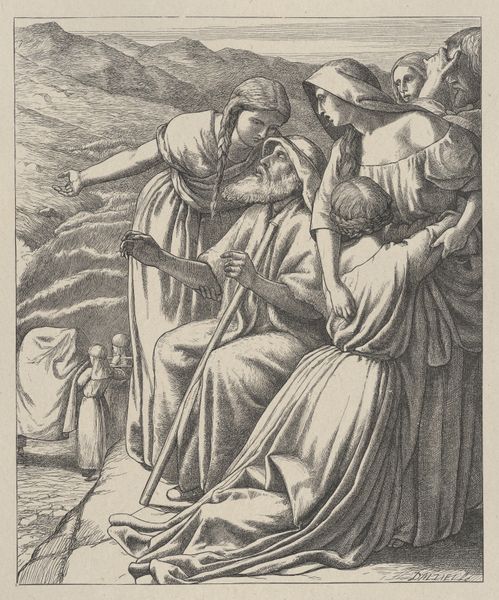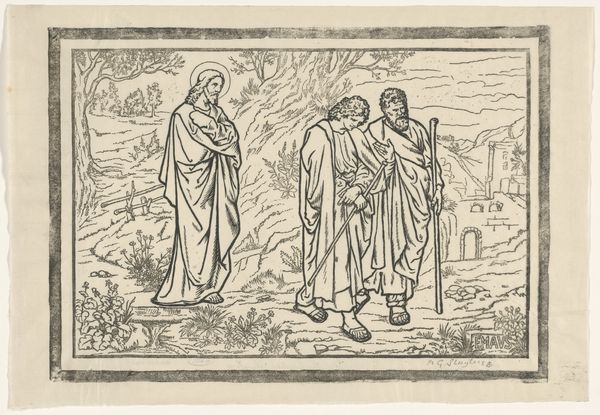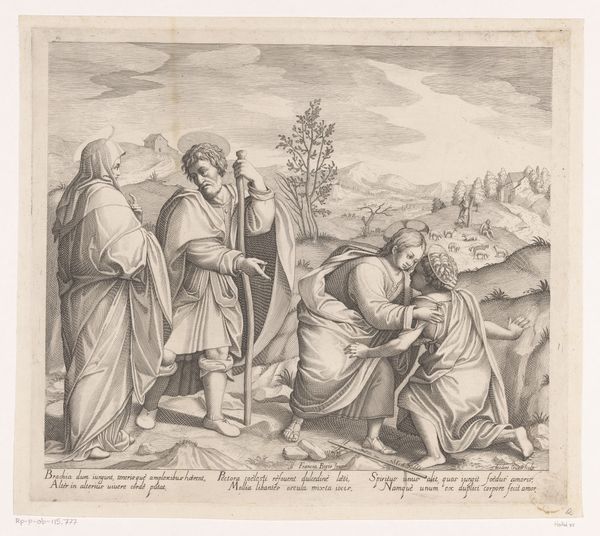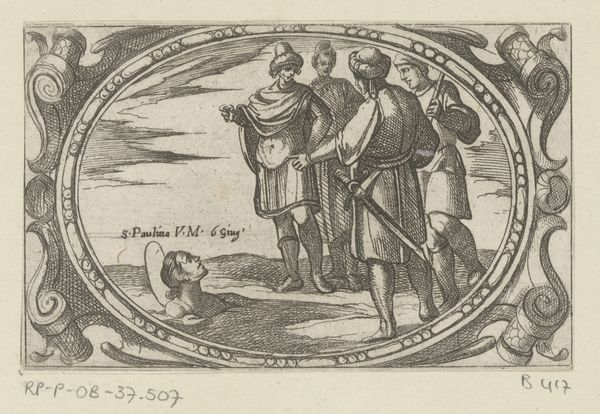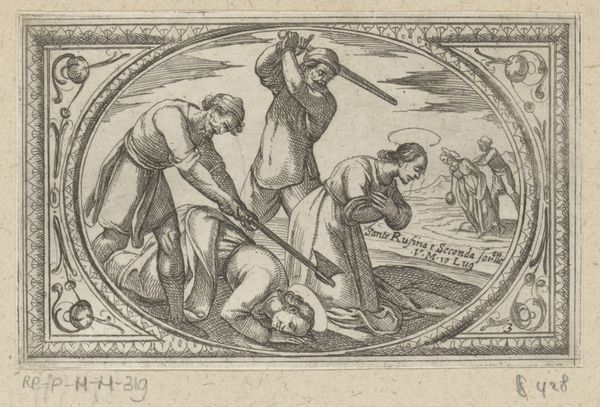
print, engraving
# print
#
old engraving style
#
figuration
#
history-painting
#
italian-renaissance
#
engraving
Dimensions: height 73 mm, width 114 mm
Copyright: Rijks Museum: Open Domain
Curator: Here we have "H. Maria," an engraving dating roughly from 1565 to 1630. Antonio Tempesta, the artist, has masterfully depicted a scene framed by an elaborate ornamental border. It's part of the Rijksmuseum's collection. Editor: It hits you, doesn't it? The rawness. Even though it's a print, there's this undeniable intensity, this heavy contrast between light and shadow, a story etched in monochrome. Curator: It really draws you in, doesn't it? Knowing Tempesta's history-painting focus, what is fascinating here is how a reproducible medium conveys an intensely emotional, one-off moment, framed in something like domestic ornamentation! Look how close he renders the would-be executioner with the Saint Maria in the foreground. Editor: Yes, the immediate thing I register is how this Italian Renaissance print, made from the labor of crafting the printing plate and running each print, becomes a tangible commodity, potentially for mass consumption. Were these affordable objects? Curator: I suspect, yes, fairly so. What an irony: something born of a singular vision becoming relatively democratic. I am always touched to contemplate the many hands involved from conception to reception. Editor: Definitely. When we think about art history, it's easy to lose sight of those unseen labors that really shaped its material existence and its availability. A question about these devotional images—to what extent was this art, a vehicle for a certain kind of social control by making legible and vivid these martyrdoms and saints' legends? Curator: Yes. Tempesta clearly invites the viewer to reflect on faith, persecution, and perhaps even defiance through submission. Look how calmly and determinedly the young woman presents herself as the subject of murder by another man. He manages to capture not just a historical scene, but a whole spectrum of the era's underlying anxieties. Editor: I agree completely, but even more powerfully here, the circulation of reproducible images speaks to shared cultural values or perhaps aspirations through this readily available means of cultural production. It almost underscores this tension between sacred experience and secular trade! Curator: The emotional depth and skillful craftsmanship layered here… all made with the goal of creating a commodity to be used and consumed, and as an aid for private contemplation or personal conviction… So many contradictions, aren't there? I'll certainly carry those ideas forward. Editor: Absolutely. Seeing it from a materialist perspective reveals a fascinating network of production and distribution that framed individual spirituality within a larger social and economic context. Thanks for the conversation!
Comments
No comments
Be the first to comment and join the conversation on the ultimate creative platform.
